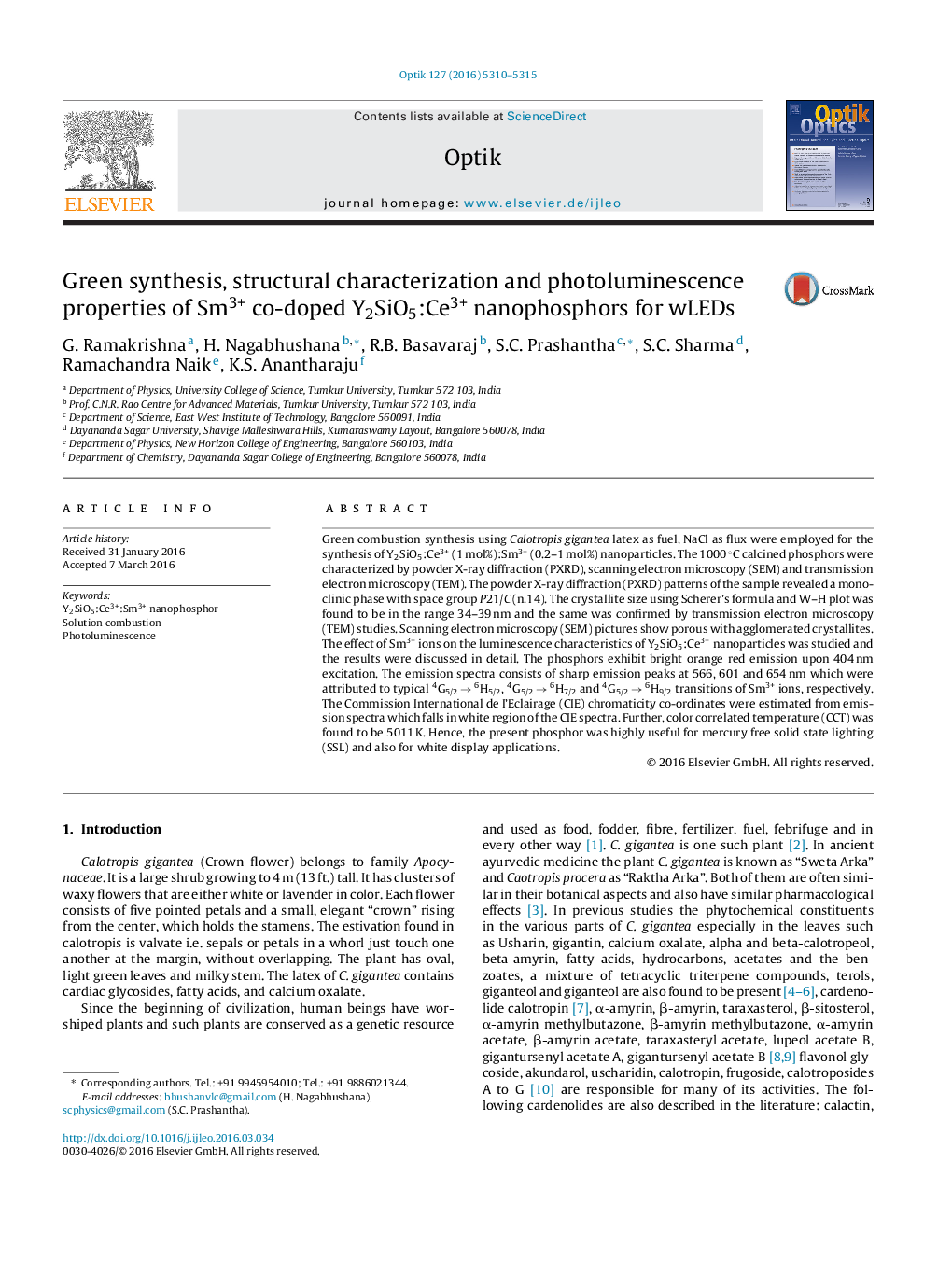| Article ID | Journal | Published Year | Pages | File Type |
|---|---|---|---|---|
| 847190 | Optik - International Journal for Light and Electron Optics | 2016 | 6 Pages |
Green combustion synthesis using Calotropis gigantea latex as fuel, NaCl as flux were employed for the synthesis of Y2SiO5:Ce3+ (1 mol%):Sm3+ (0.2–1 mol%) nanoparticles. The 1000 °C calcined phosphors were characterized by powder X-ray diffraction (PXRD), scanning electron microscopy (SEM) and transmission electron microscopy (TEM). The powder X-ray diffraction (PXRD) patterns of the sample revealed a monoclinic phase with space group P21/C (n.14). The crystallite size using Scherer's formula and W–H plot was found to be in the range 34–39 nm and the same was confirmed by transmission electron microscopy (TEM) studies. Scanning electron microscopy (SEM) pictures show porous with agglomerated crystallites. The effect of Sm3+ ions on the luminescence characteristics of Y2SiO5:Ce3+ nanoparticles was studied and the results were discussed in detail. The phosphors exhibit bright orange red emission upon 404 nm excitation. The emission spectra consists of sharp emission peaks at 566, 601 and 654 nm which were attributed to typical 4G5/2 → 6H5/2, 4G5/2 → 6H7/2 and 4G5/2 → 6H9/2 transitions of Sm3+ ions, respectively. The Commission International de I’Eclairage (CIE) chromaticity co-ordinates were estimated from emission spectra which falls in white region of the CIE spectra. Further, color correlated temperature (CCT) was found to be 5011 K. Hence, the present phosphor was highly useful for mercury free solid state lighting (SSL) and also for white display applications.
